The Oxidation Resistance of Nb-Si-Based Alloys at Intermediate and High Temperatures
Abstract
1. Introduction
2. Material and Methods
3. Results and Discussion
3.1. Microstructural Characterization of As-Cast Alloys
3.2. Intermediate Temperature Oxidation Resistance
3.3. High Temperature Oxidation Resistance
4. Conclusions
- The microstructures of the base alloy, 2Sn alloy and 2Ta alloy consisted of Nb5Si3, NbSS and Cr2Nb.
- The base alloy suffered from catastrophic pest oxidation at 800 °C. The addition of Sn suppressed the pest phenomenon. However, the addition of Ta protected the Nb-Si-based alloy from pest oxidation for a short time.
- At 1250 °C, 2 at. % of Sn could enhance the oxidation resistance of Nb-Si-based alloys due to the formation of a Sn-rich layer. However, 2 at. % of Ta facilitated the a faster transportation of oxygen, resulting in worse oxidation resistance.
Author Contributions
Funding
Conflicts of Interest
References
- Perepezko, J.H. The Hotter the Engine, the Better. Science 2009, 326, 1068–1069. [Google Scholar] [CrossRef] [PubMed]
- Tsakiropoulos, P. On the alloying and properties of tetragonal Nb5Si3 in Nb-silicide based alloys. Materials 2018, 11, 69. [Google Scholar] [CrossRef] [PubMed]
- Geng, J.; Tsakiropoulos, P.; Shao, G.S. Oxidation of Nb-Si-Cr-Al in situ composites with Mo, Ti and Hf additions. Mater. Sci. Eng. A 2006, 441, 26–38. [Google Scholar] [CrossRef]
- Bewlay, B.P.; Jackson, M.R.; Subramanian, P.R.; Zhao, J.-C. A review of very-high temperature Nb-silicide-based composites. Metall. Mater. Trans. A 2003, 34, 2043–2052. [Google Scholar] [CrossRef]
- Bewlay, B.P.; Jackson, M.R.; Lipsitt, H.A. The balance of mechanical and environmental properties of a multi-element niobium-niobium silicide-based in-situ composite. Metall. Mater. Trans. A 1996, 27, 3801–3808. [Google Scholar] [CrossRef]
- Su, L.F.; Jia, L.N.; Feng, Y.B.; Zhang, H.R.; Yuan, S.N.; Zhang, H. Microstructure and room-temperature fracture toughness of directionally solidified Nb-Si-Ti-Cr-Al-Hf alloy. Mater. Sci. Eng. A 2013, 560, 672–677. [Google Scholar] [CrossRef]
- Alvarez, D.; Varma, S.K. Characterization of microstructures and oxidation behaviour of Nb-20Si-20Cr-5Al alloy. Corros. Sci. 2011, 53, 2161–2167. [Google Scholar] [CrossRef]
- DiStefano, J.R.; Pint, B.A.; DeVan, J.H. Oxidation of refractory metals in air and low pressure oxygen gas. Int. J. Refract. Met. Hard Mater. 2000, 18, 237–243. [Google Scholar] [CrossRef]
- Thomas, K.S.; Varma, S.K. Oxidation response of three Nb-Cr-Mo-Si-B alloys in air. Corros. Sci. 2015, 99, 145–153. [Google Scholar] [CrossRef]
- Zhang, S.; Guo, X. Alloying effects on the microstructure and properties of Nb-Si based ultrahigh temperature alloys. Intermetallics 2016, 70, 33–44. [Google Scholar] [CrossRef]
- Jia, L.N.; Weng, J.F.; Li, Z.; Hong, Z.; Su, L.F.; Zhang, H. Room temperature mechanical properties and high temperature oxidation resistance of a high Cr containing Nb-Si based alloy. Mater. Sci. Eng. A 2015, 623, 32–37. [Google Scholar] [CrossRef]
- Nelson, J.; Ghadyani, M.; Utton, C.; Tsakiropoulos, P. A Study of the effects of Al, Cr, Hf, and Ti additions on the microstructure and oxidation of Nb-24Ti-18Si silicide based alloys. Materials 2018, 11, 1579. [Google Scholar] [CrossRef]
- Voglewede, B.; Rangel, V.R.; Varma, S.K. The effects of uncommon silicides on the oxidation behavior of alloys from the Nb-Cr-Si system. Corros. Sci. 2012, 61, 123–133. [Google Scholar] [CrossRef]
- Berztiss, D.A.; Cerchiara, R.R.; Gulbransen, E.A.; Pettit, F.S.; Meier, G.H. Oxidation of MoSi2 and comparison with other silicide materials. Mater. Sci. Eng. A 1992, 155, 165–181. [Google Scholar] [CrossRef]
- Li, Y.; Zhu, W.F.; Li, Q.; Qiu, S.K.; Zhang, J.Y. Phase equilibria in the Nb-Ti side of the Nb-Si-Ti system at 1200°C and its oxidation behavior. J. Alloy. Compd. 2017, 704, 311–321. [Google Scholar] [CrossRef]
- Rödhammer, P.; Knabl, W.; Semprimoschnig, C.; Storf, R.; Witwer, M.; Clemens, H.; Huber, K.; Martinz, H.-P.; Köck, W.; Sulik, M. Protection of Nb- and Ta-based alloys against high temperature oxidation. Int. J. Refract. Met. Hard Mater. 1993, 12, 283–293. [Google Scholar] [CrossRef]
- Zheng, J.; Hou, X.; Wang, X.; Meng, Y.; Zheng, X.; Zheng, L. Isothermal oxidation mechanism of a newly developed Nb-Ti-V-Cr-Al-W-Mo-Hf alloy at 800–1200 °C. Int. J. Refract. Met. Hard Mater. 2016, 54, 322–329. [Google Scholar] [CrossRef]
- Xiong, B.W.; Cai, C.C.; Wan, H.; Zheng, Y.H. Effects of Si, W and W-Mo on isothermal oxidation behaviors of Nb/Nb5Si3 in situ composites at high temperature. J. Alloy. Compd. 2009, 486, 330–334. [Google Scholar] [CrossRef]
- Chan, K.S. Cyclic oxidation response of multiphase niobium-based alloys. Metall. Mater. Trans. A 2004, 35, 589–597. [Google Scholar] [CrossRef]
- Zheng, H.; Lu, S.Q.; Zhu, J.Y.; Liu, G.M. Effect of Al additions on the oxidation behavior of Laves phase NbCr2 alloys at 1373 K and 1473 K. Int. J. Refract. Met. Hard Mater. 2008, 27, 659–663. [Google Scholar] [CrossRef]
- Su, L.F.; Jia, L.N.; Weng, J.F.; Hong, Z.; Zhou, C.G.; Zhang, H. Improvement in the oxidation resistance of Nb-Ti-Si-Cr-Al-Hf alloys containing alloyed Ge and B. Corros. Sci. 2014, 88, 460–465. [Google Scholar] [CrossRef]
- Su, L.F.; Jia, L.N.; Jiang, K.Y.; Zhang, H. The oxidation behavior of high Cr and Al containing Nb-Si-Ti-Hf-Al-Cr alloys at 1200 and 1250 °C. Int. J. Refract. Met. Hard Mater. 2017, 69, 131–137. [Google Scholar] [CrossRef]
- Guo, Y.L.; Jia, L.N.; Zhang, H.R.; Zhang, F.X.; Zhang, H. Enhancing the oxidation resistance of Nb-Si based alloys by yttrium addition. Intermetallics 2018, 101, 165–172. [Google Scholar] [CrossRef]
- Guo, Y.L.; Jia, L.N.; Zhang, H.R.; Kong, B.K.; Huang, Y.L.; Zhang, H. Microstructure and High-Temperature Oxidation Behavior of Dy-Doped Nb–Si-Based Alloys. Acta Metall. Sin. Engl. Lett. 2018, 31, 742–752. [Google Scholar] [CrossRef]
- Wang, W.; Zhou, C.G. Characterization of microstructure and oxidation resistance of Y and Ge modified silicide coating on Nb-Si based alloy. Corros. Sci. 2016, 110, 114–122. [Google Scholar] [CrossRef]
- Yanagihara, K.; Maruyama, T.; Nagata, K. Effect of third elements on the pesting suppression of Mo-Si-X intermetallics (X = Al, Ta, Ti, Zr and Y). Intermetallics 1996, 4, S133–S139. [Google Scholar] [CrossRef]
- Zelenitsas, K.; Tsakiropoulos, P. Effect of Al, Cr and Ta additions on the oxidation behaviour of Nb-Ti-Si in situ composites at 800 °C. Mater. Sci. Eng. A 2006, 416, 269–280. [Google Scholar] [CrossRef]
- Knittel, S.; Mathieu, S.; Portebois, L.; Vilasi, M. Effect of tin addition on Nb-Si-based in situ composites. Part II: Oxidation behaviour. Intermetallics 2014, 47, 43–52. [Google Scholar] [CrossRef]
- Shi, R.X.; Ding, J.; Cao, Y.Q.; Zhang, A.Y.; Yang, P. Oxidation behavior and kinetics of Al2O3-TiC-Co composites. Int. J. Refract. Met. Hard Mater. 2013, 36, 130–135. [Google Scholar] [CrossRef]
- Mathieu, S.; Knittel, S.; Berthod, P.; Mathieu, S.; Vilasi, M. On the oxidation mechanism of niobium-base in situ composites. Corros. Sci. 2012, 60, 181–192. [Google Scholar] [CrossRef]
- Su, L.F.; Lu-Steffes, O.; Zhang, H.; Perepezko, J.H. An ultra-high temperature Mo-Si-B based coating for oxidation protection of NbSS/Nb5Si3 composites. Appl. Surf. Sci. 2015, 337, 38–44. [Google Scholar] [CrossRef]
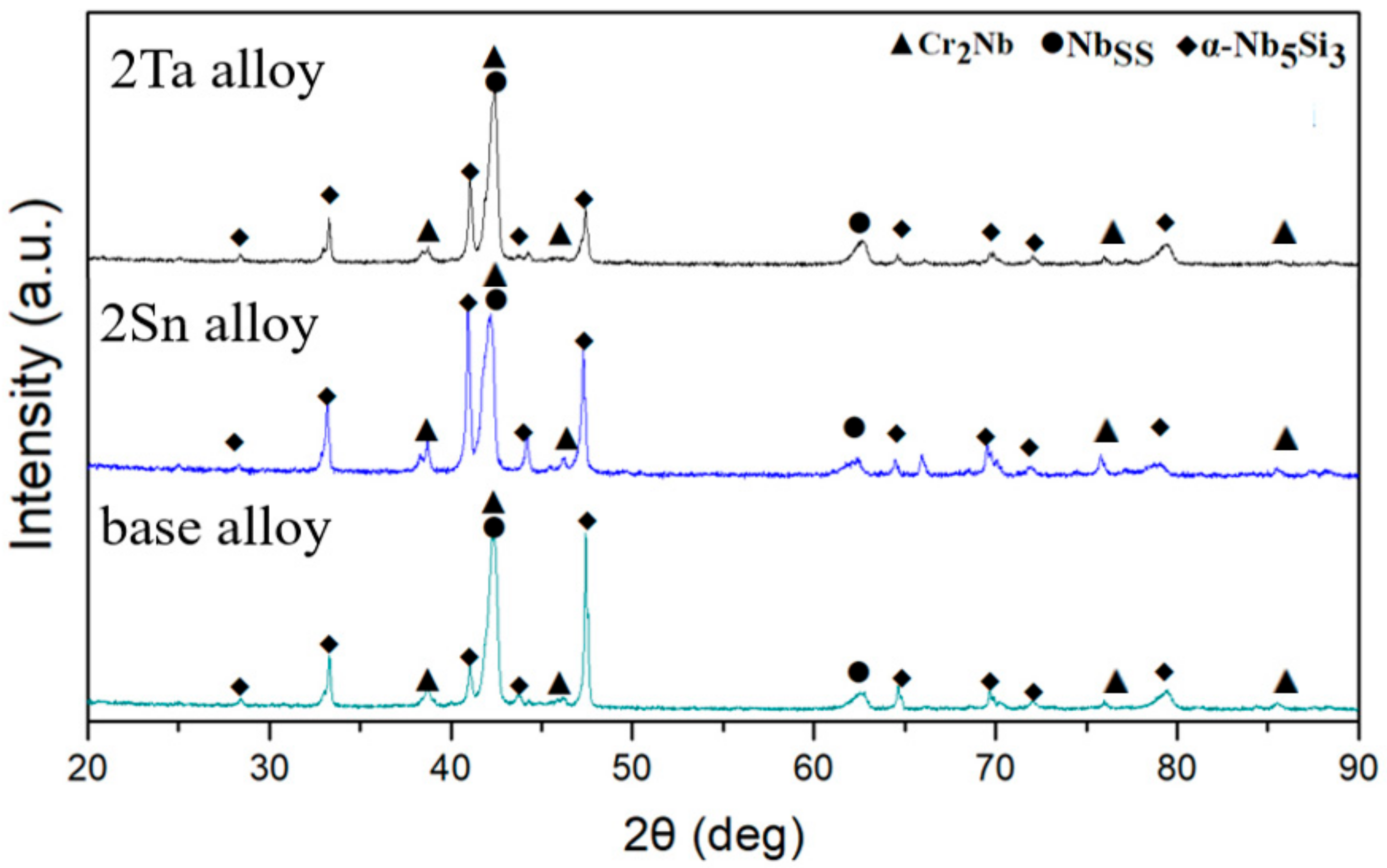
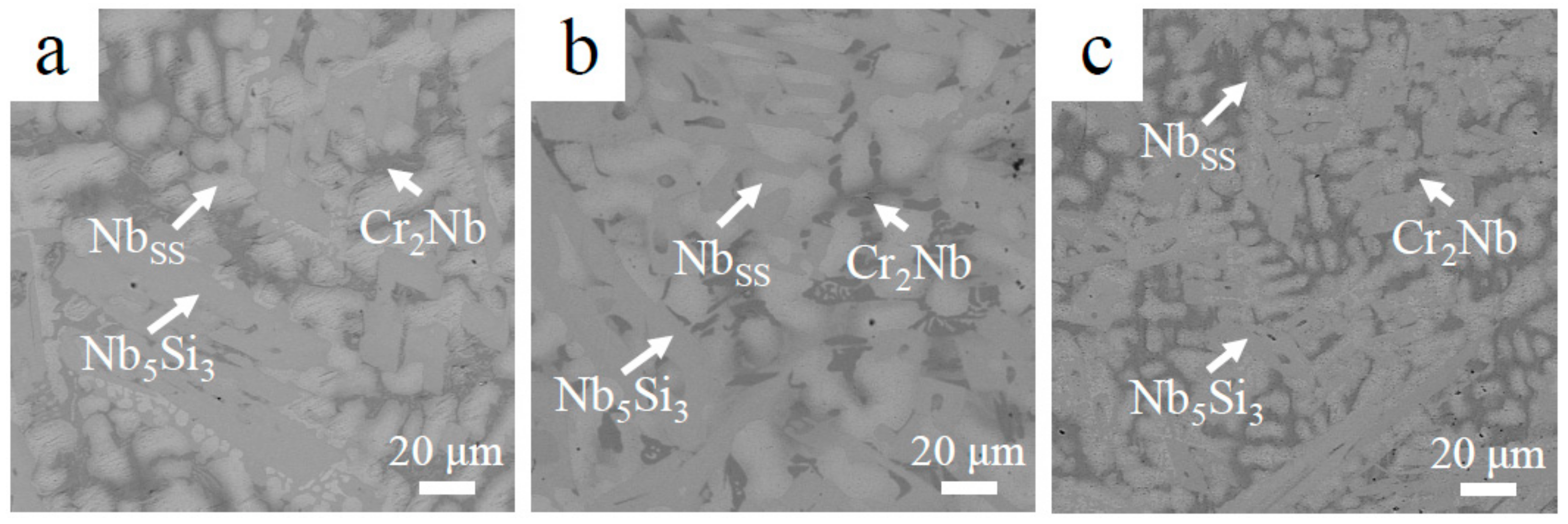

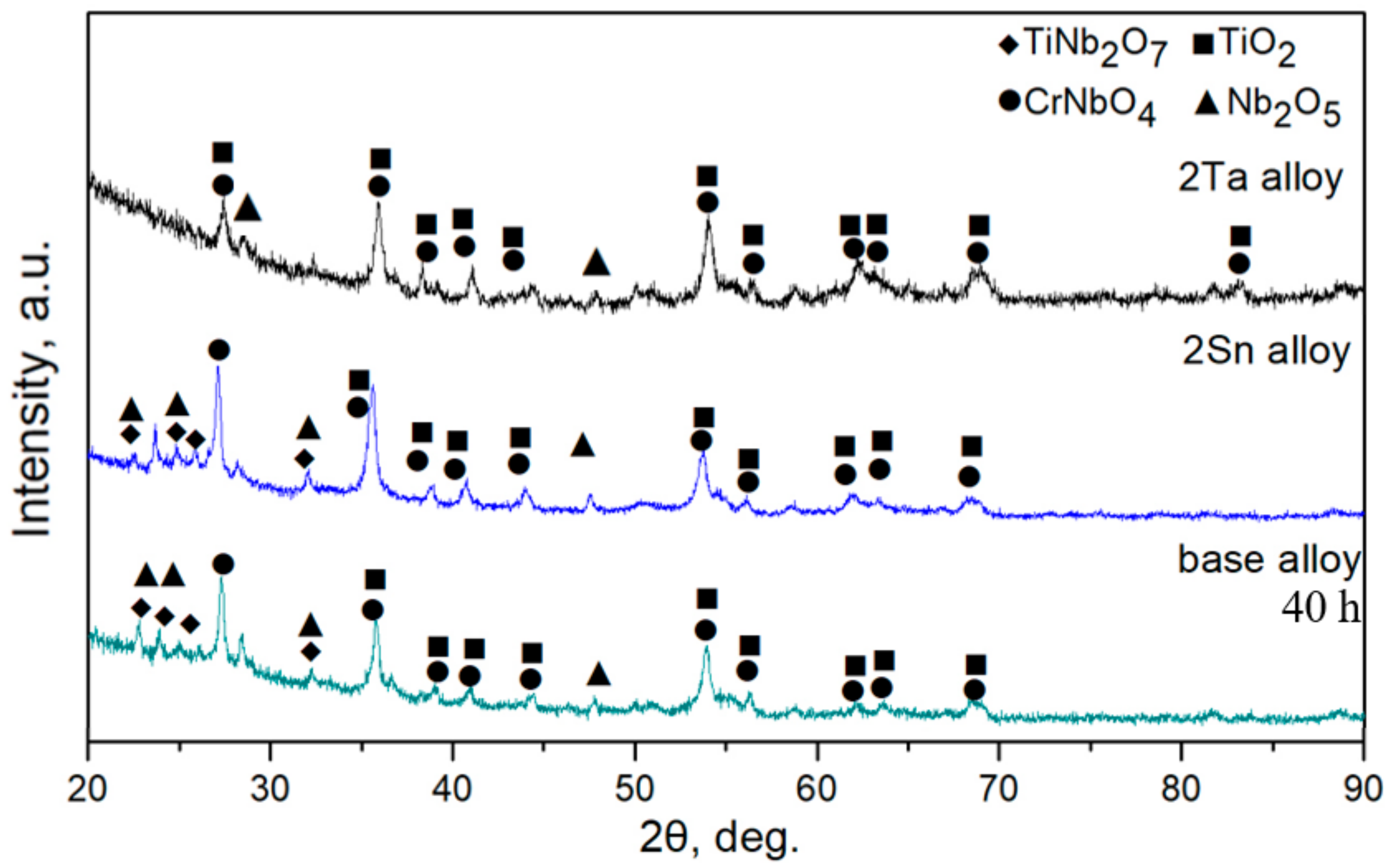
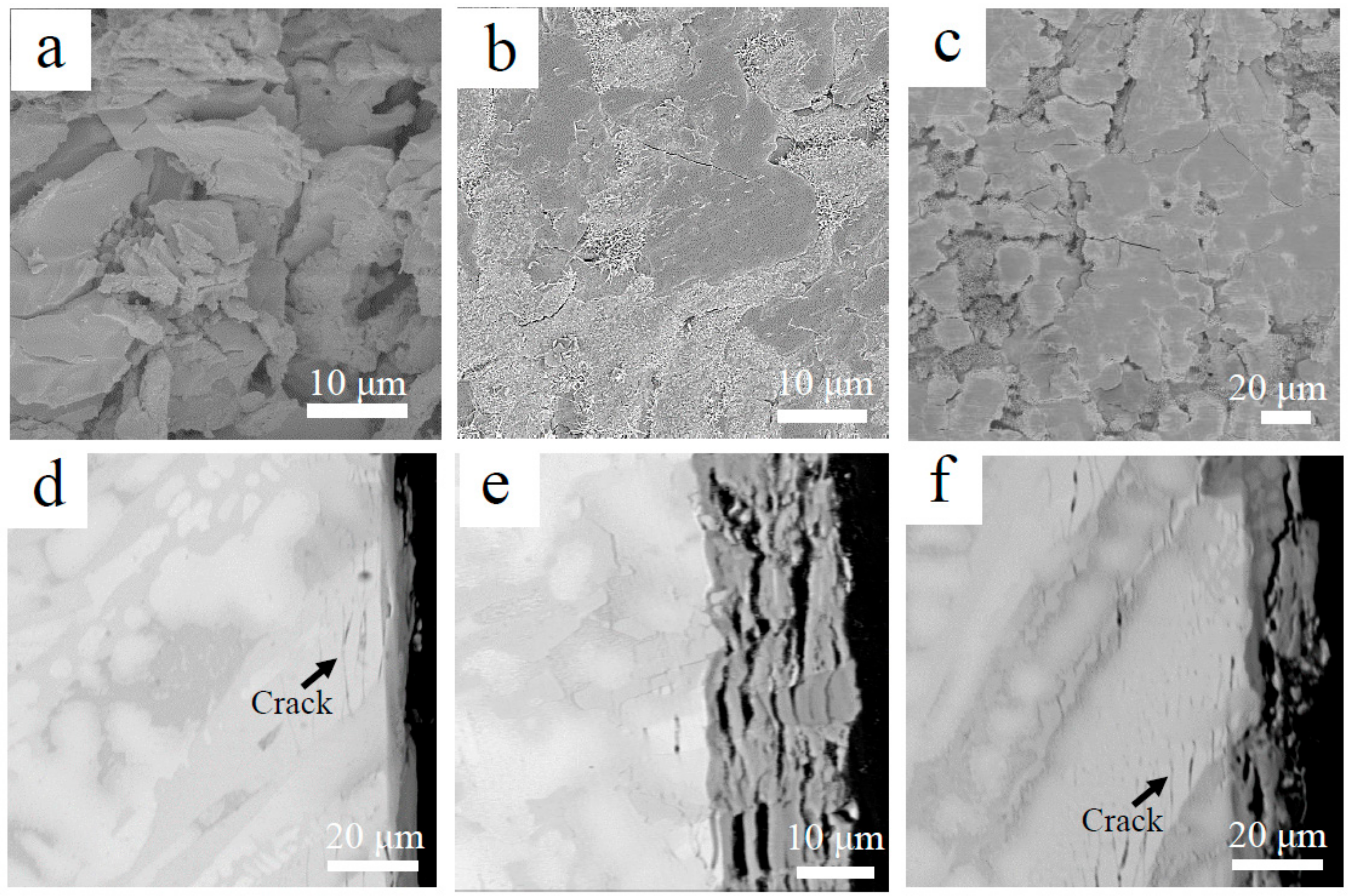

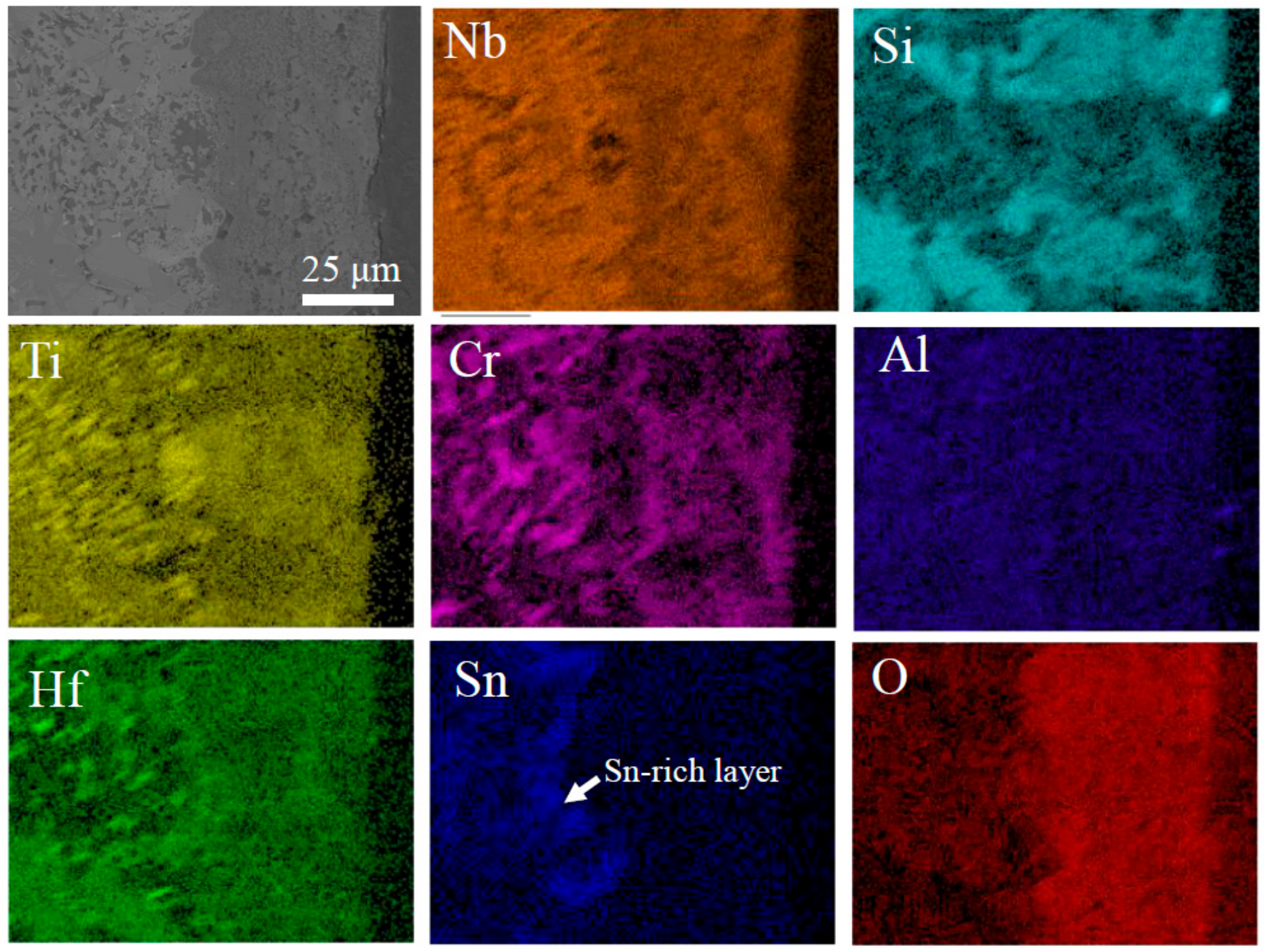
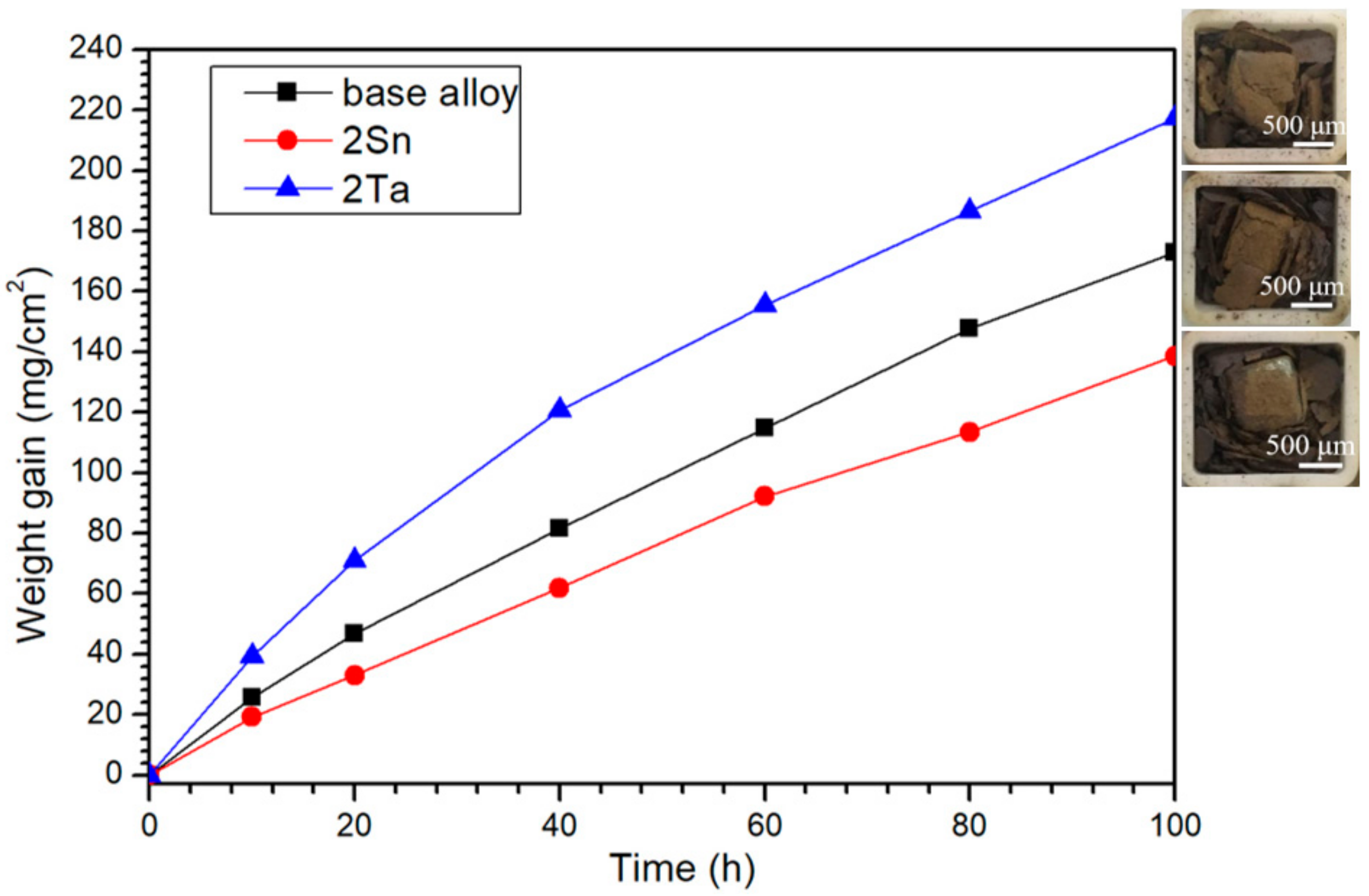
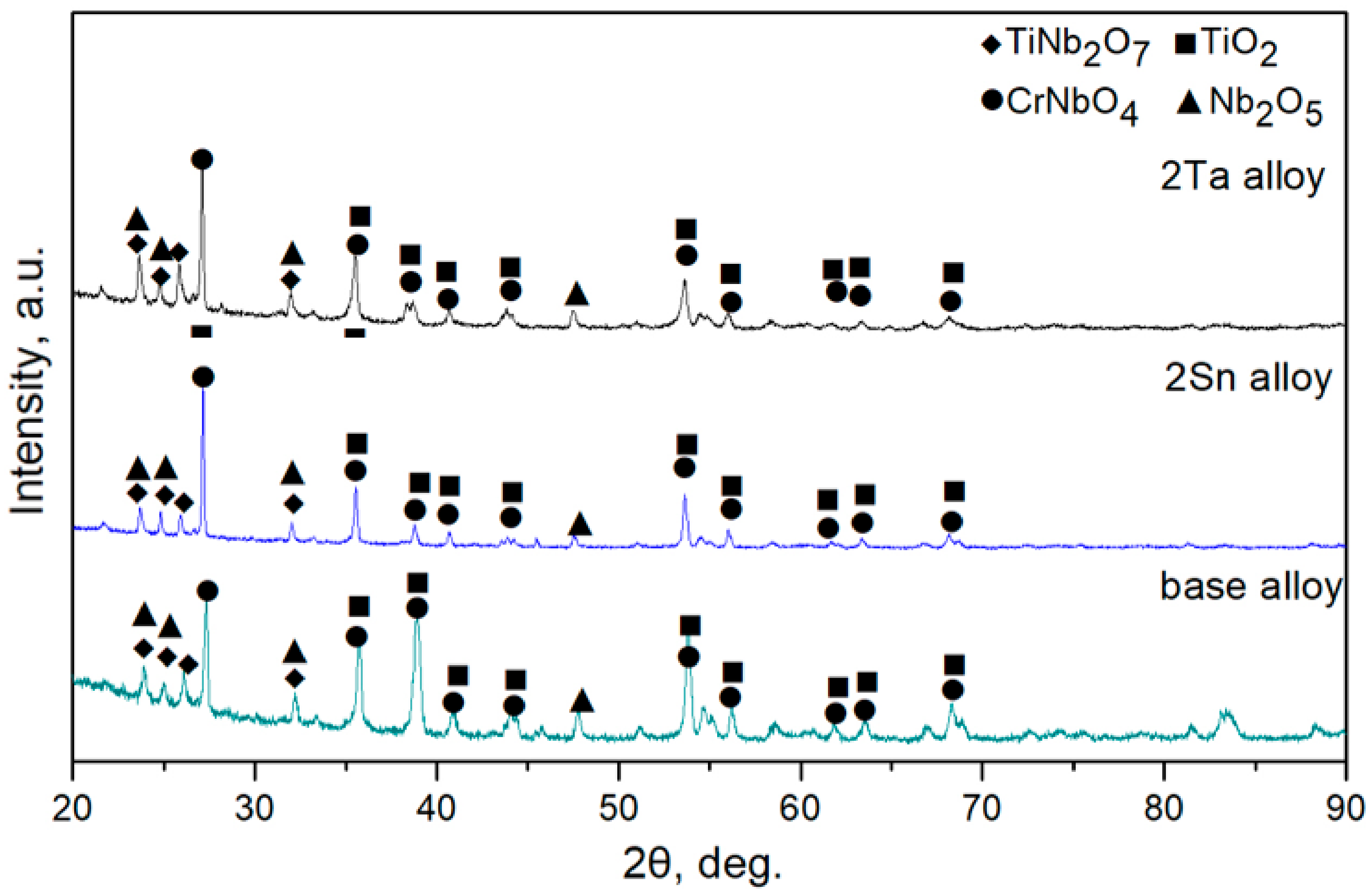

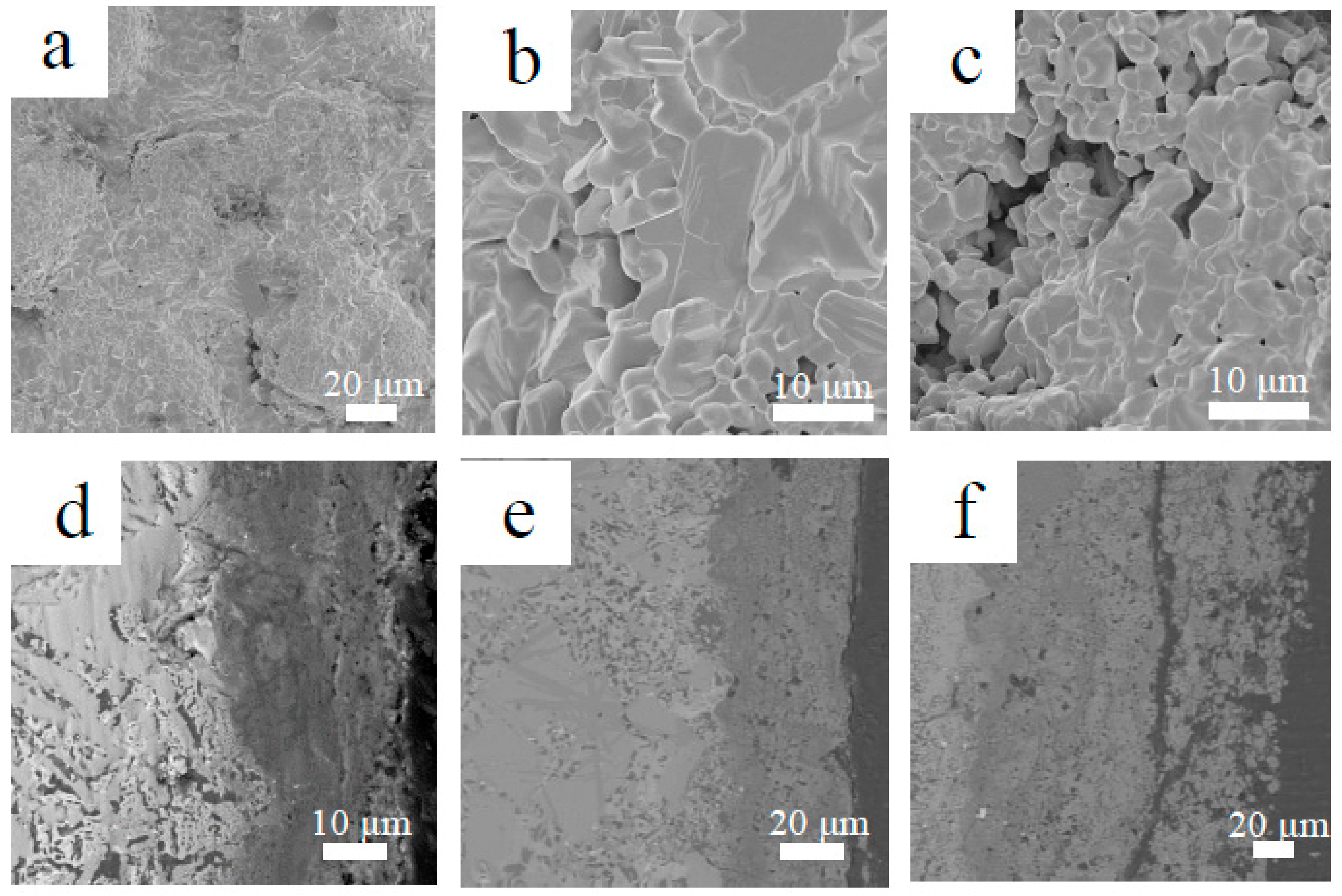
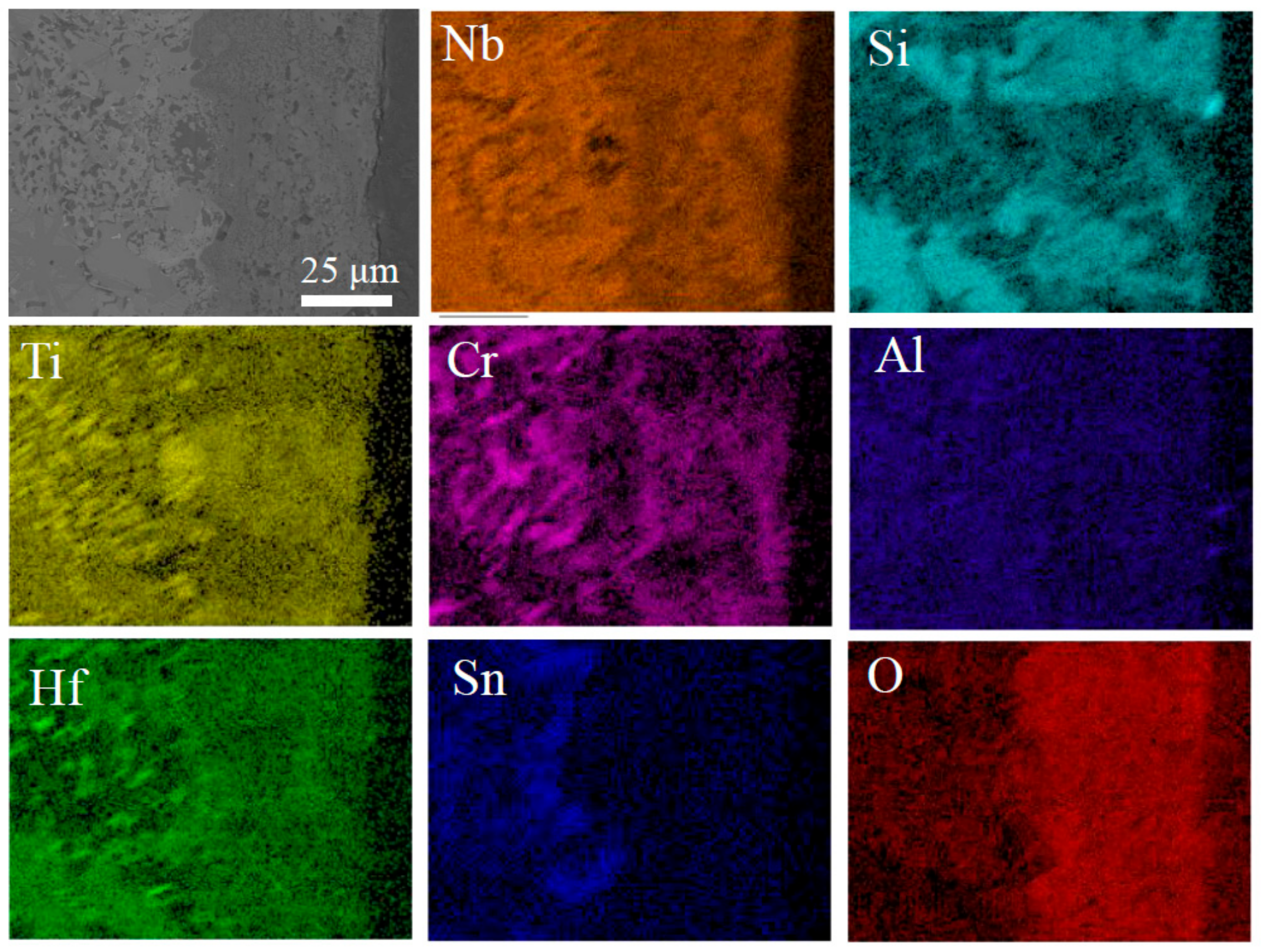
© 2020 by the authors. Licensee MDPI, Basel, Switzerland. This article is an open access article distributed under the terms and conditions of the Creative Commons Attribution (CC BY) license (http://creativecommons.org/licenses/by/4.0/).
Share and Cite
Yang, J.; Zhuo, G.; Jiang, K.; Zhu, X.; Su, L. The Oxidation Resistance of Nb-Si-Based Alloys at Intermediate and High Temperatures. Materials 2020, 13, 1229. https://doi.org/10.3390/ma13051229
Yang J, Zhuo G, Jiang K, Zhu X, Su L. The Oxidation Resistance of Nb-Si-Based Alloys at Intermediate and High Temperatures. Materials. 2020; 13(5):1229. https://doi.org/10.3390/ma13051229
Chicago/Turabian StyleYang, Jianyong, Guanqun Zhuo, Kaiyong Jiang, Xinghan Zhu, and Linfen Su. 2020. "The Oxidation Resistance of Nb-Si-Based Alloys at Intermediate and High Temperatures" Materials 13, no. 5: 1229. https://doi.org/10.3390/ma13051229
APA StyleYang, J., Zhuo, G., Jiang, K., Zhu, X., & Su, L. (2020). The Oxidation Resistance of Nb-Si-Based Alloys at Intermediate and High Temperatures. Materials, 13(5), 1229. https://doi.org/10.3390/ma13051229



